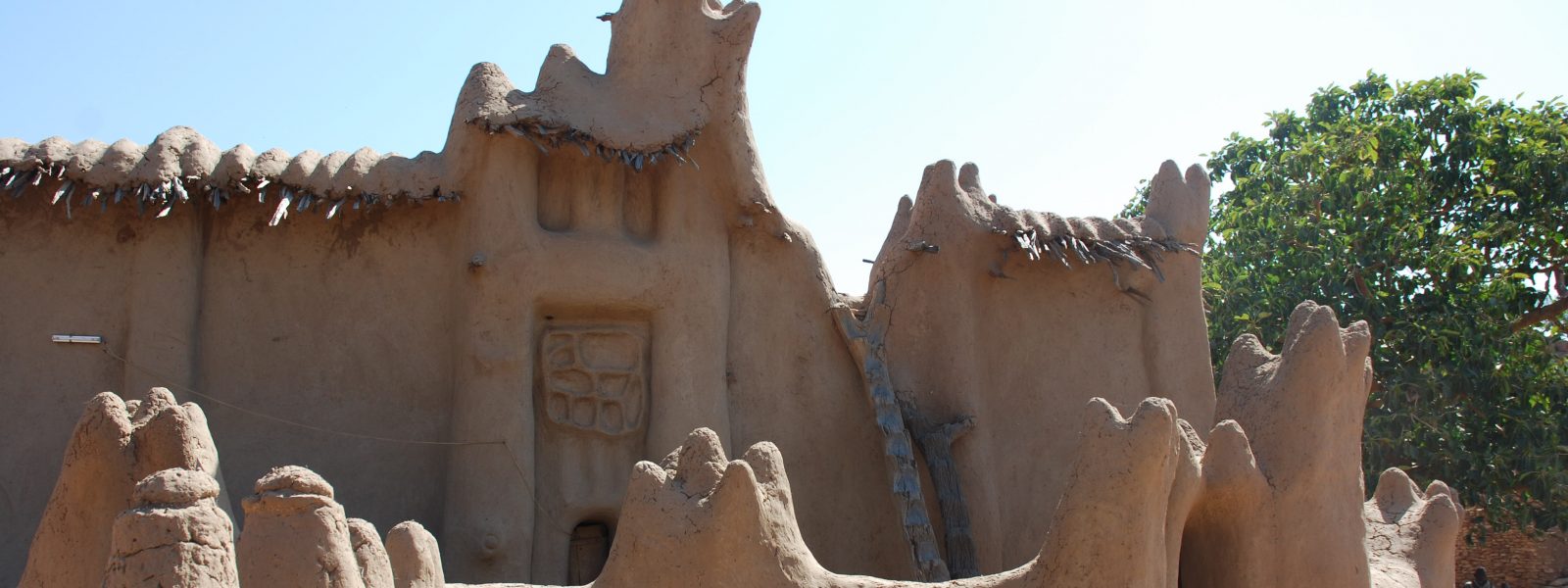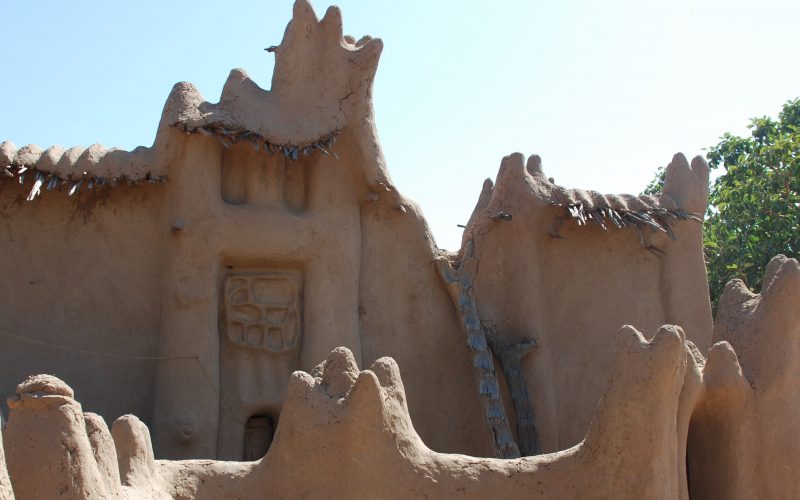Nando holds a special status due to the unique mosque which is located in the center of the village.
The mosque was built in the 12th century and it presents a very different style compared to the well-known West-African traditional mosque architecture. In fact, the mosque on the outside has a great resemblance with Dogon architecture, while inside the walls are decorated with Islamic themes from the Koran. Columns are incorporated into the façade and at the edges, in correspondence with the roof, they are surmounted by multiple head pinnacles. In the same style, a low wall with arched entrances and pointed pinnacles surrounds the building. Behind the mosque there is a small Koran school that was also part of the first restoration.


The mosque needs to been maintained every year. A regular mud plastering is necessary not only for the total strength of the construction, but also to keep the building stable and protected.
The restoration of the mosque involved a systematic application of mud skimming, which had dissipated due to the heavy rain and the lack of maintenance. Necessary for a good outcome was the quality of the clay, which requires time for the fermentation and the addition of additives like donkey dung and wild grapes. This prevents cracks in the new clay skin, losing protection against rain. Improving and refreshing the local knowledge allowed to upgrade the quality in the restoration.
The most important role in the restoration is played by the inhabitants of the village. Around 60 people are involved in the restoration, where everyone has its own role. Some of them collect the proper banco (mud), some work on the mixture and preparation of the mud, the women are taking care of the water and some others are in charge of plastering.
During the restoration, the assistance of ADI and the supervision of Boubacar Kouroumanse (the expert from Djenné) guide the local community, increasing their awareness of the historical, social and cultural values of the heritage.




